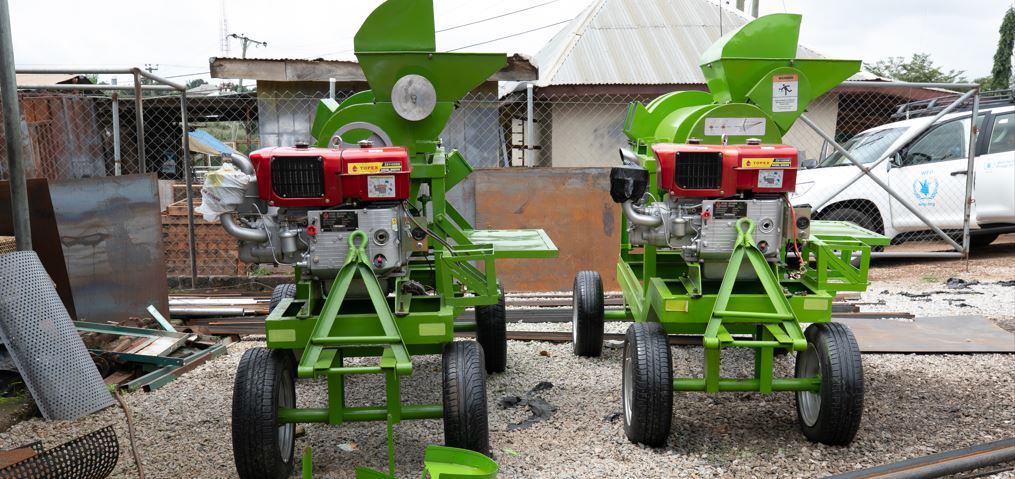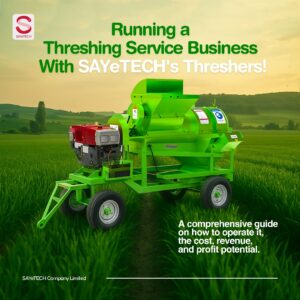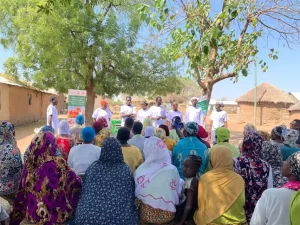
I am a seasoned maize farmer in Ghana who has worked with many farm machines. Just as the famous quote says “Good ideas glow in the dark”, we can say same for farm machines. “Good machines glow in the dark”. In our ever-evolving agricultural landscape, it’s not just ideas that shine brightly; it’s also the machines that power our farms. Just like good ideas, good machines glow in the dark, standing resilient against the challenges that come their way. In this post, we’ll explore the essence of this concept as we navigate the terrain of selecting agricultural machinery to elevate farm yield.
Understanding the Landscape: Major Farm Machines in Africa
Before delving into what to consider when choosing agricultural machinery, it’s essential to understand the landscape of farm machines commonly used by farmers across Africa. While the spectrum of available machinery varies, some prevalent ones include:
- Tractors: Tractors remain a staple in African agriculture, offering versatility in tasks such as plowing, planting, and harvesting.
- Seeder Machines: These machines aid in efficient and uniform seed placement, crucial for optimizing crop yield.
- Harvesters: Automating the labor-intensive process of harvesting, these machines are essential for maximizing yield and efficiency.
- Threshers: Threshers play a vital role in separating grains from the crop, streamlining post-harvest operations and enhancing productivity.
Key Considerations When Choosing Agricultural Machinery
Choosing a machine can either make or break your harvest. There are many farm machine brands in Ghana. Some of local and others are foreign (mostly from India and China). Many farmers have told me of stories where they purchased a farm machine from particular sources and utterly regretted the decision based on the experience that they had to go through in securing, using and maintaining their machine. So, these key factors can be lifesaving when you consider them in your decision-making process.
1. Pricing and Logistics
- Consider the initial investment required for purchasing the machinery, including importation factors if sourcing from outside your country.
- Factor in additional costs such as transportation, customs duties, and taxes to determine the total acquisition cost.
- Ensure you have sufficient research on every stage of the delivery process. In some cases, I have heard farmers complain of making payment for a machine which was tested to be working at the manufacturers side but couldn’t work when it landed in the buyer’s country.
2. Durability and Maintenance
- Prioritize machinery known for its robust build quality, capable of withstanding harsh conditions and rigorous use typical of agricultural operations.
- Assess the availability of spare parts locally and the ease of maintenance to minimize downtime during peak seasons. You don’t want a farm machine that will become an object of decoration after breaking down due to unavailability of spare parts.
3. Farm Size Compatibility
- Ensure the selected machinery is appropriate for the scale of your farm operations, capable of effectively servicing your harvest yield without overburdening or underutilizing resources.
4. Secondary Revenue Opportunities
- Explore whether the machine can be utilized to render services to neighboring farms, potentially generating alternate streams of income during off-peak seasons.
5. Fuel Consumption and Engine Type
- Opt for machinery with fuel-efficient engines, minimizing operational costs while maximizing productivity.
- Consider the availability of fuel types compatible with the machinery within your locality.
6. Efficiency and Multi-purposefulness
- Seek feedback from fellow farmers regarding the efficiency and performance of the machinery under consideration.
- Assess whether the machinery can be adapted for use across different crops or operations, maximizing its utility throughout the farming calendar.
Case Study: Choosing a Multi-Crop Thresher
Let’s apply these considerations to the selection of a multi-crop thresher, an essential machine for threshing various cereal crops:
- Pricing and Logistics: Compare the costs of locally available threshers to imported brands, factoring in logistics and potential importation challenges.
- Durability and Maintenance: Prioritize reputed brands known for durability, with local availability of spare parts and easy maintenance procedures.
- Farm Size Compatibility: Ensure the thresher’s capacity aligns with your farm’s output to avoid underutilization or strain on the machinery.
- Secondary Revenue Opportunities: Explore offering threshing services to neighboring farms during harvest seasons to supplement income.
- Fuel Consumption and Engine Type: Select a thresher with a fuel-efficient engine, considering the availability of compatible fuel types in your area.
- Efficiency and Multi-purposefulness: Choose a thresher with a proven track record of efficiency across various crops, maximizing its utility throughout the year.
While making a choice, you might want to consider some popular thresher brands in Africa:
- SAYeTECH: A local brand in Ghana known for its manufacturing of threshers and other farm machines.
- Massey Fergusson: A renowned foreign brand recognized for its high-quality tractors, threshers, and harvesters.
- There is also Zonda Tec, Crop Doctor and many others.
Also take note of these common Problems with Threshers and How to Avoid Them:
- Faulty Engine: The number one problem farmers complain about is that of the engine. Ensure you have sufficient information about the kind of engine or motor the thresher is running on.
- Mechanical Failures: Regular maintenance and timely servicing can prevent unexpected breakdowns and extend the lifespan of the thresher.
Conclusion
Selecting the right agricultural machinery is akin to nurturing a good idea; it requires careful consideration, foresight, and resilience. Just as good ideas glow in the dark, good machines stand resilient against the challenges of agricultural endeavors, illuminating the path towards greater productivity and sustainability. By prioritizing factors such as durability, compatibility, efficiency, and versatility, farmers can empower themselves with the tools needed to thrive in the ever-changing landscape of agriculture in Africa.



